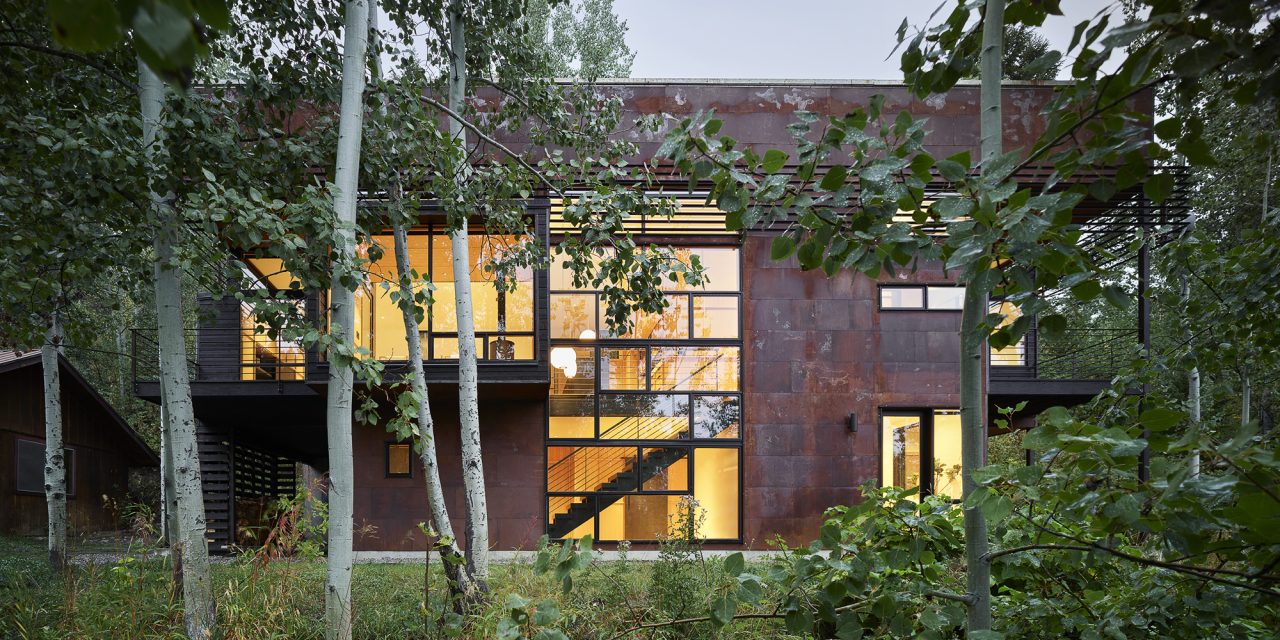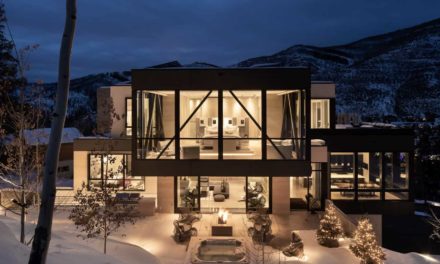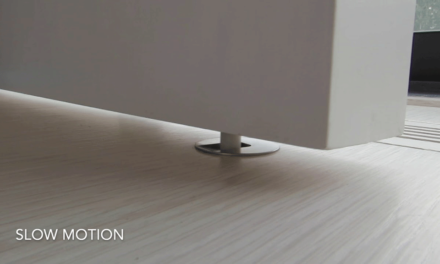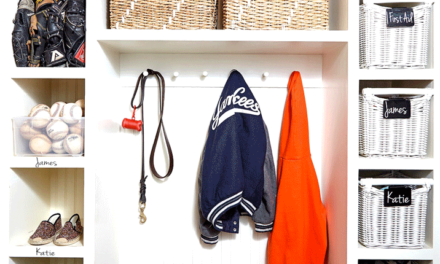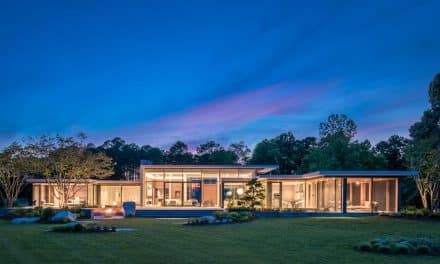Evolving as deliberately as the forest surrounding it, this residence by CLB is a testament to the longevity of thoughtful design. Situated in a dappled Aspen grove outside Jackson, Wyoming, the treehouse-like project reorients the occupants to their place in nature. For the past 20 years, CLB has crafted and recrafted the home, making changes to support the needs of the people living in it.
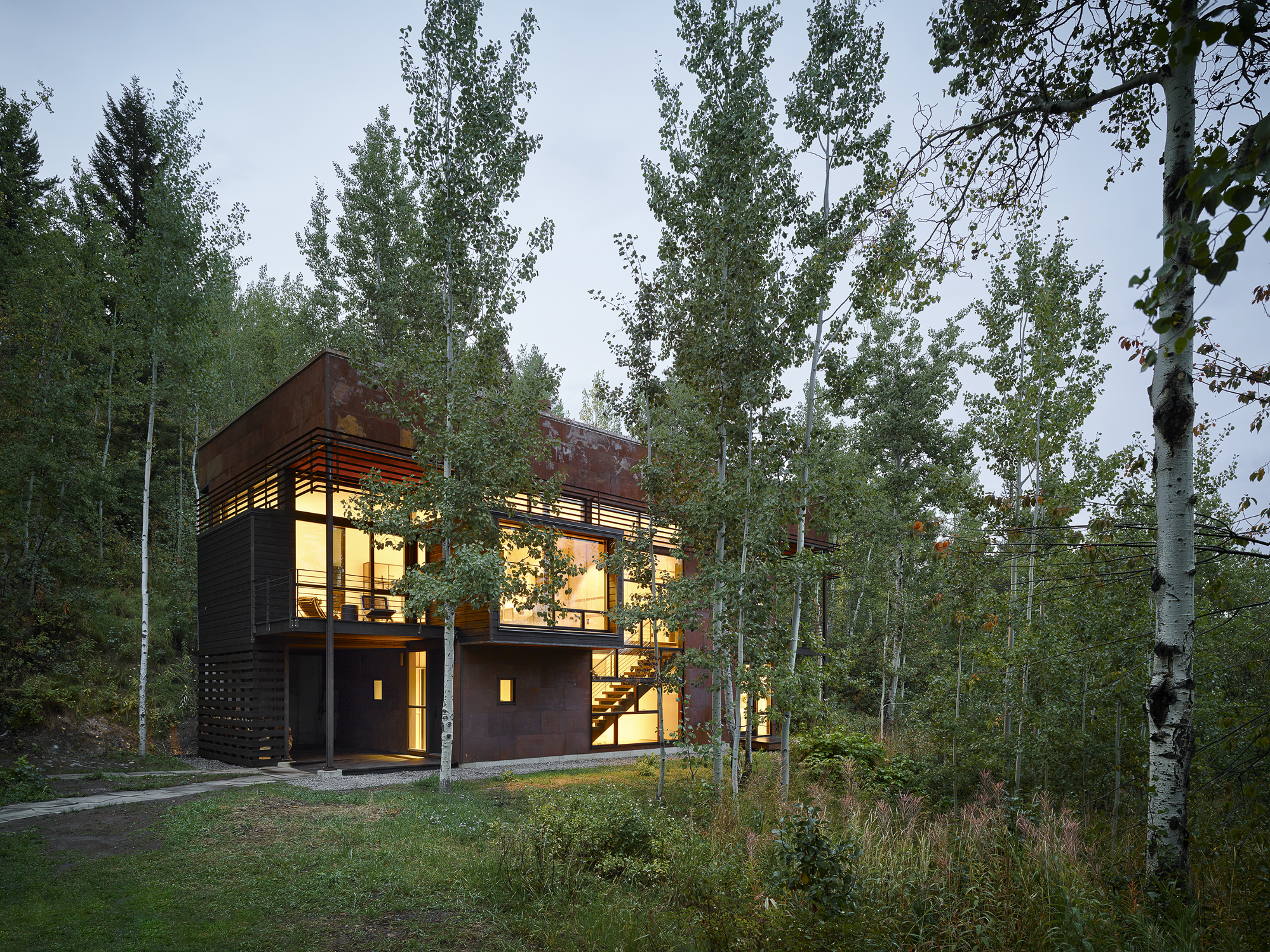
In 2003, CLB finished building the 2,400-square-foot house on a beautiful site with limited space and budget. The owner wanted a home that felt connected to nature, with more light and openness than the dark 1970s-era cabin that was already on the property. Re-articulating vernacular forms through modular components and machined details and incorporating slow-weathering materials such as oxidized steel and cedar, CLB sought to render a structure that would sit lightly and change subtly over time – an organic object within the landscape.
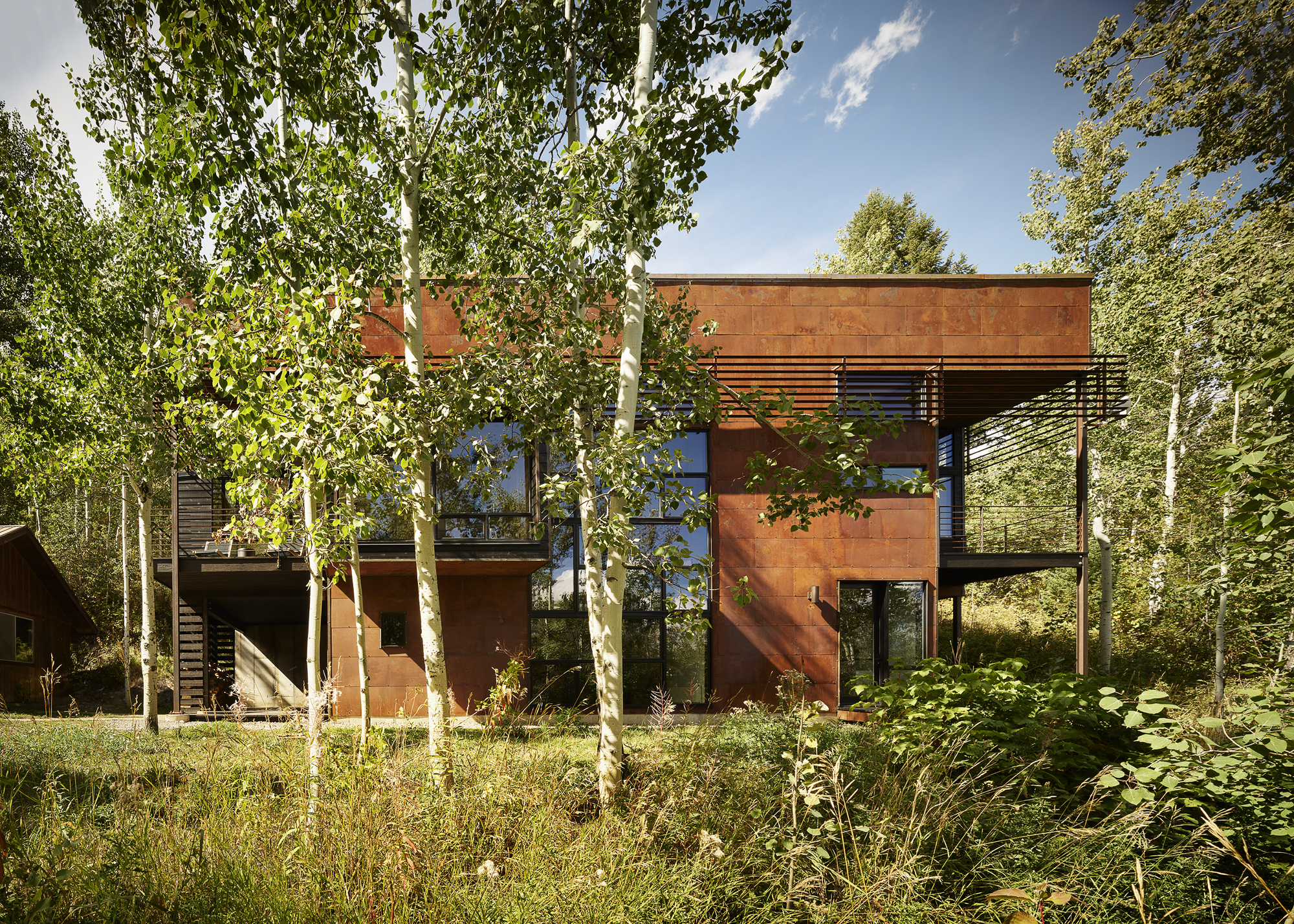
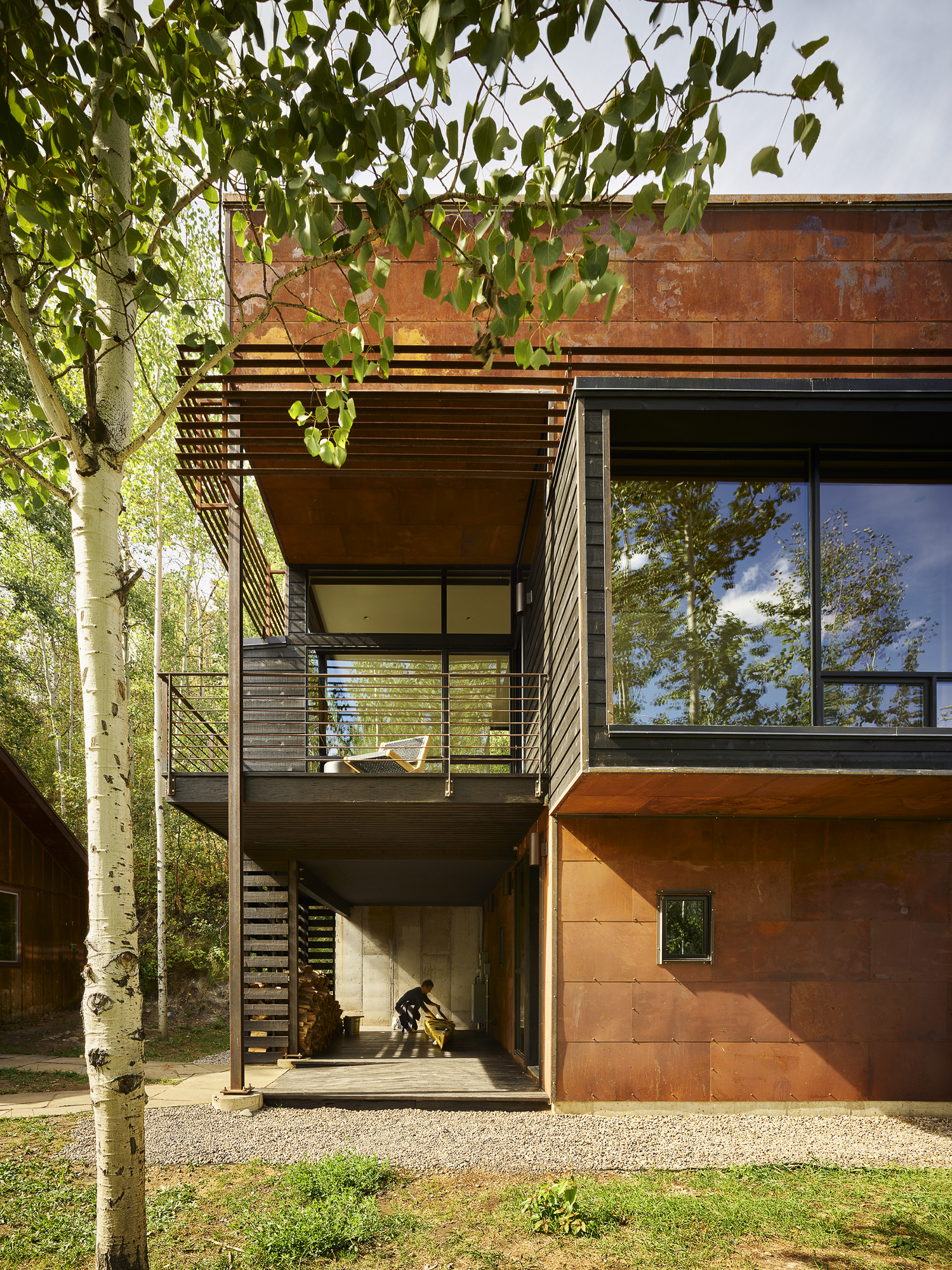
The residence’s design upends the public-to-private relationships of a traditional home, positioning the kitchen, master bedroom, and living room on the upper level nestled within Aspen canopy.
The airy and light-filled volume is revealed dramatically at the top of the stairs when the occupant finally “emerges” into the treetops. A cantilevered, cedar-clad projection from the second level further extends the immersion, allowing daily activities to coexist within expansive views of the outdoors.
“It was also about reorganizing the way their main living level would relate to views and light, so the box presents a kind of upside-down living situation,” says. Eric Logan, AIA, partner with CLB. “You begin low, climbing the stairs and then you’re on this kind of piano nobile — this thing lifted into the sky, into the canopy of the trees. So it really has a kind of cool treehouse sort of feel about it. It just totally changes the way you feel when you’re on the site.”
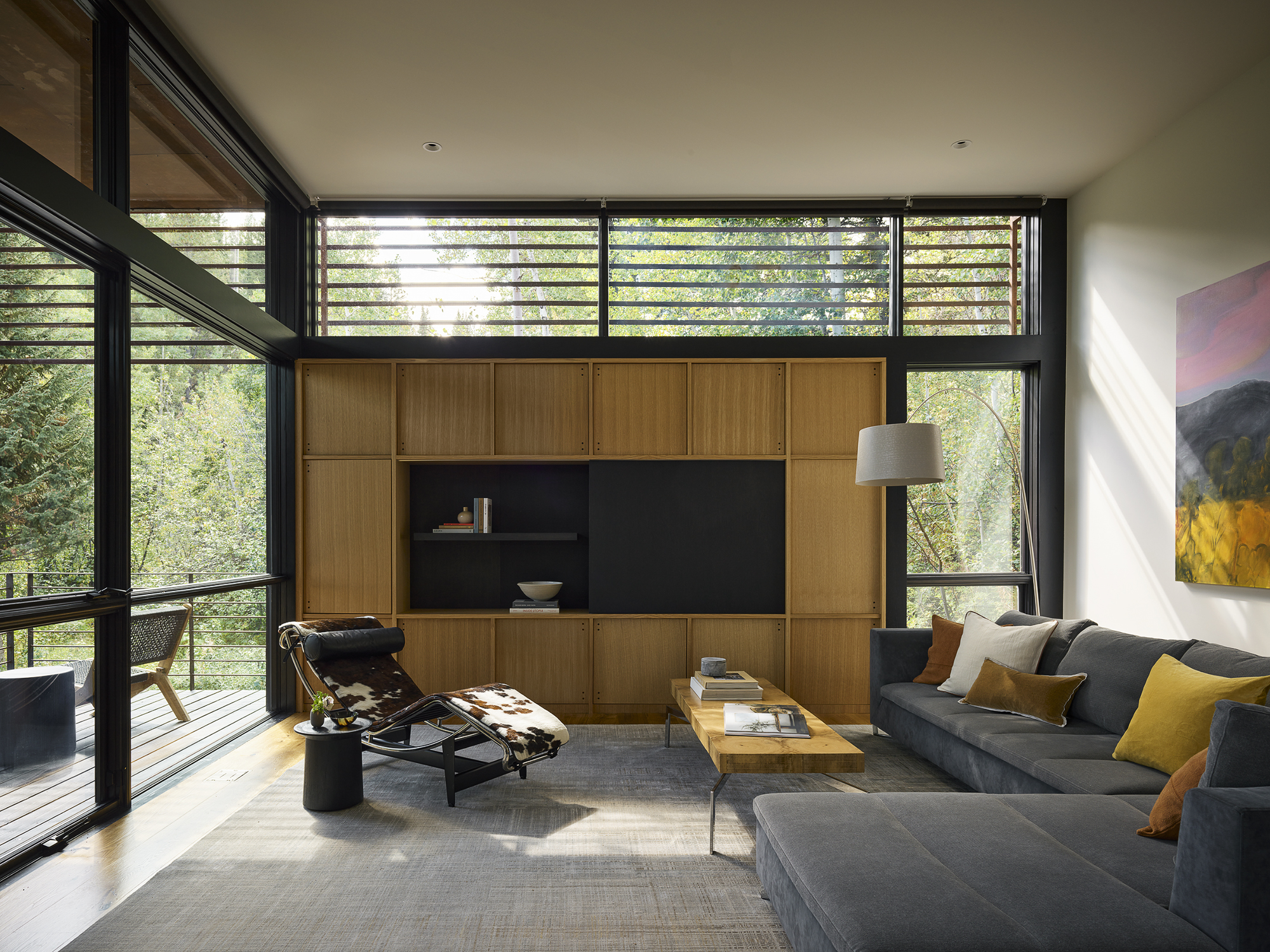
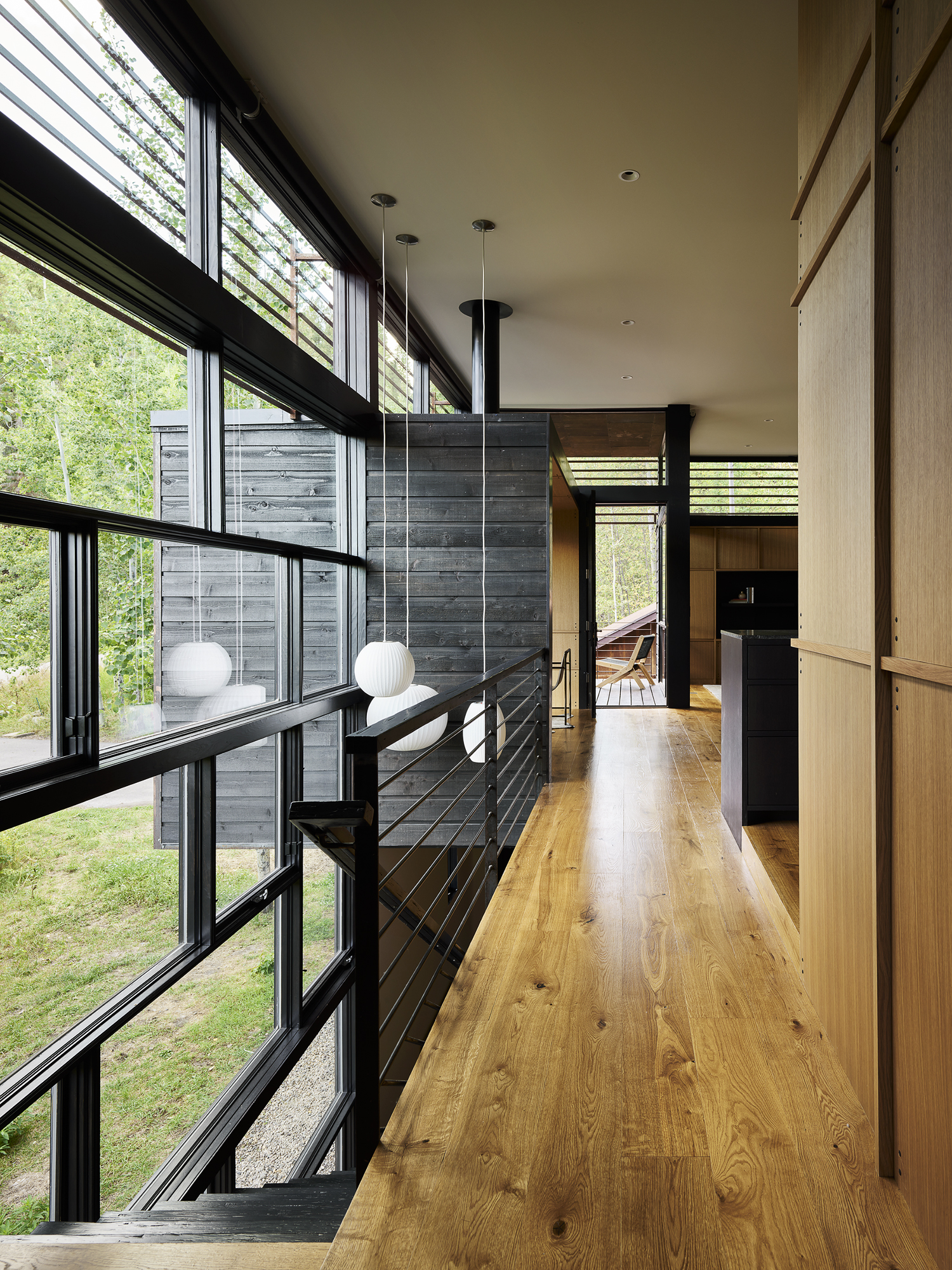
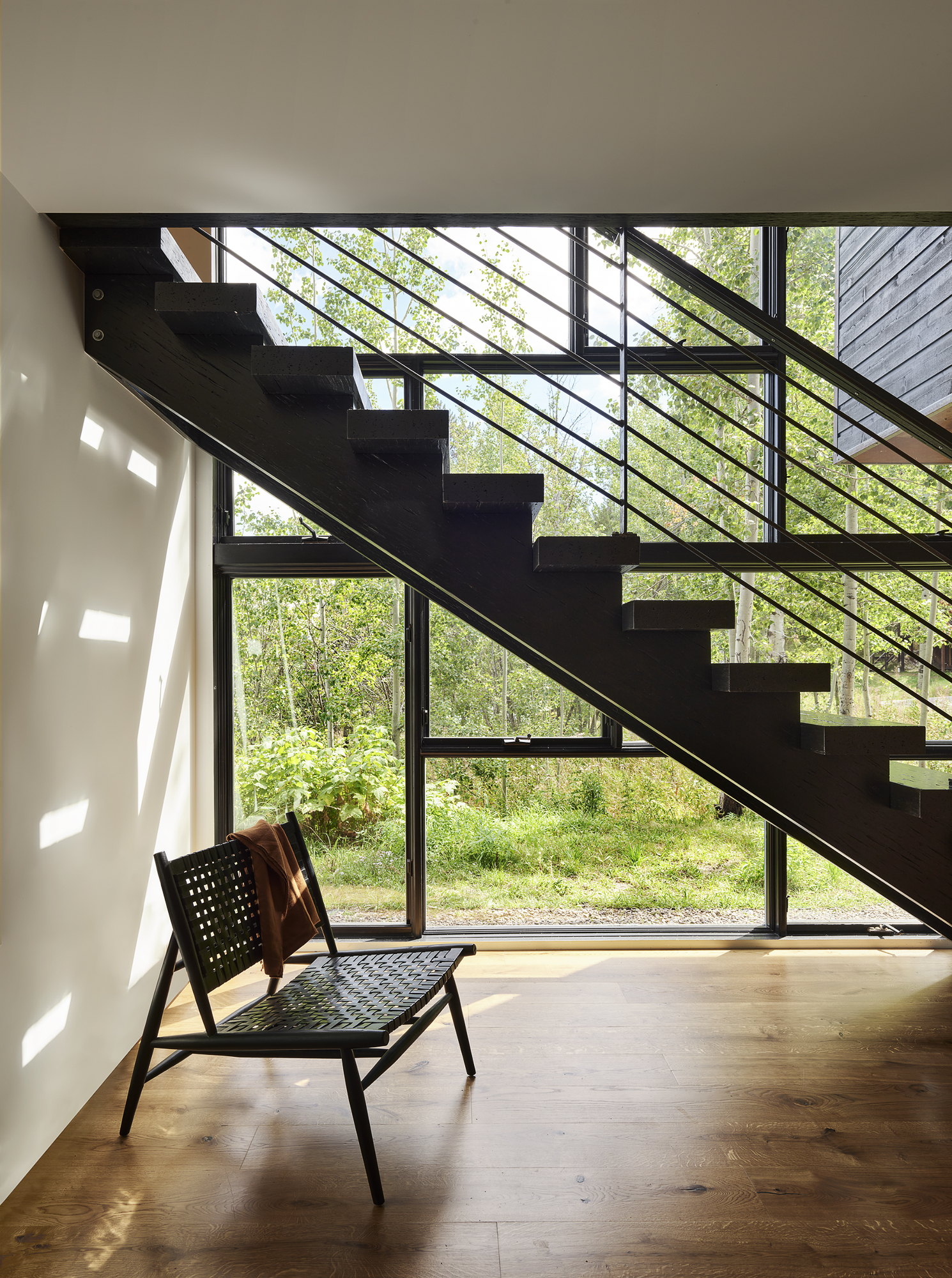
A continuous band of glazed clerestories demarcates the high ceilings from exterior walls and filters sunlight into the interior. On the lower level, a guest bedroom and entry area sit close to the hillside, flooded with light by the expansive, two-story window that lines the main stairwell.
Twenty years after its original construction, the home’s care was transferred to a new owner who found inspiration in its humble materials, minimalist detailing, and evocative light quality. Seeking to update the home in its existing design language, the new owner wrote a letter to CLB asking them to revisit the project.
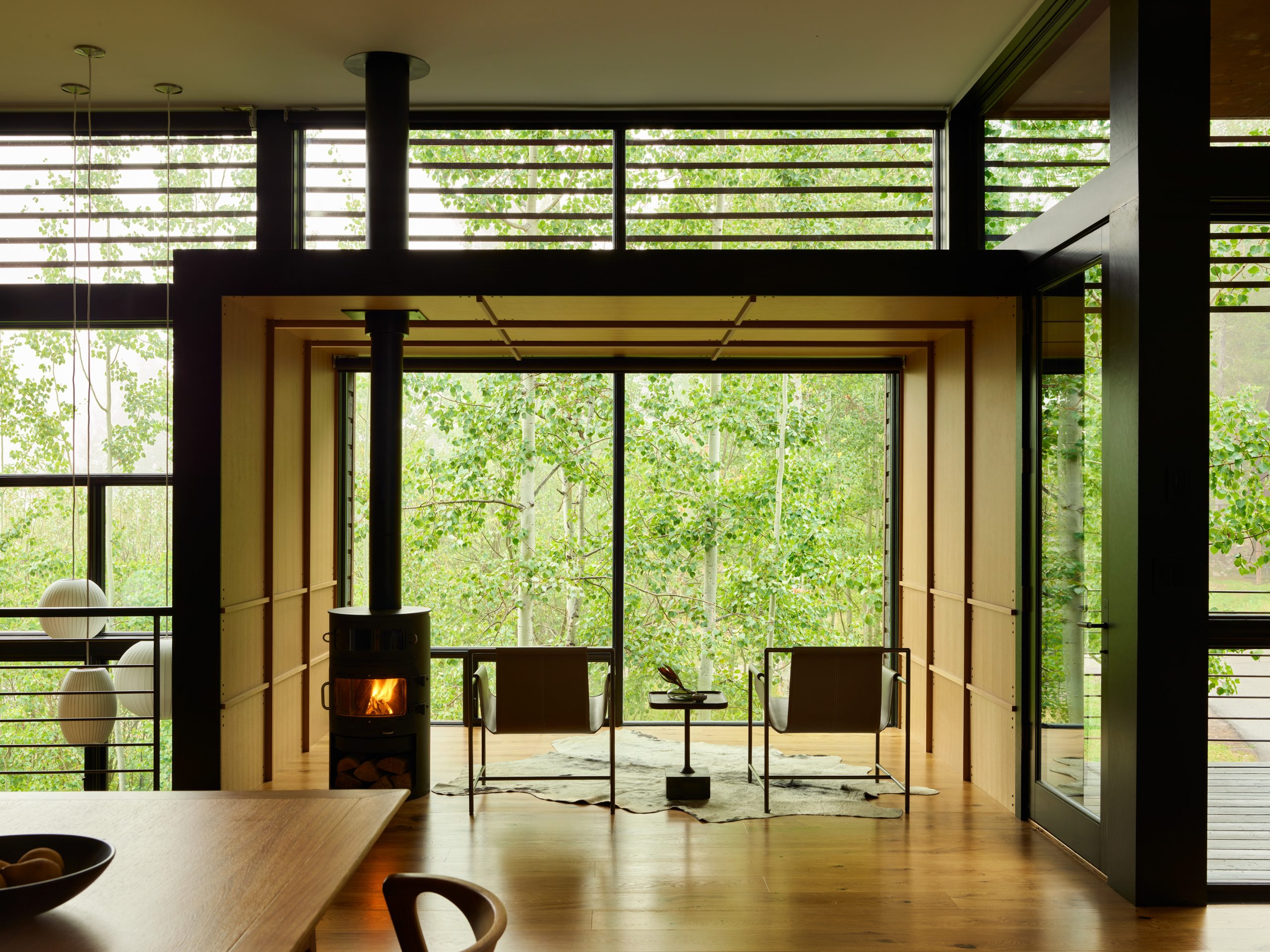
The new design works within the decisive structural gestures of the original, while refreshing harder-wearing spaces and surfaces with finely-crafted details and warm, tactile, natural finishes. Updated elements were fabricated and constructed through modular and machined techniques similar to those used in the original iteration.
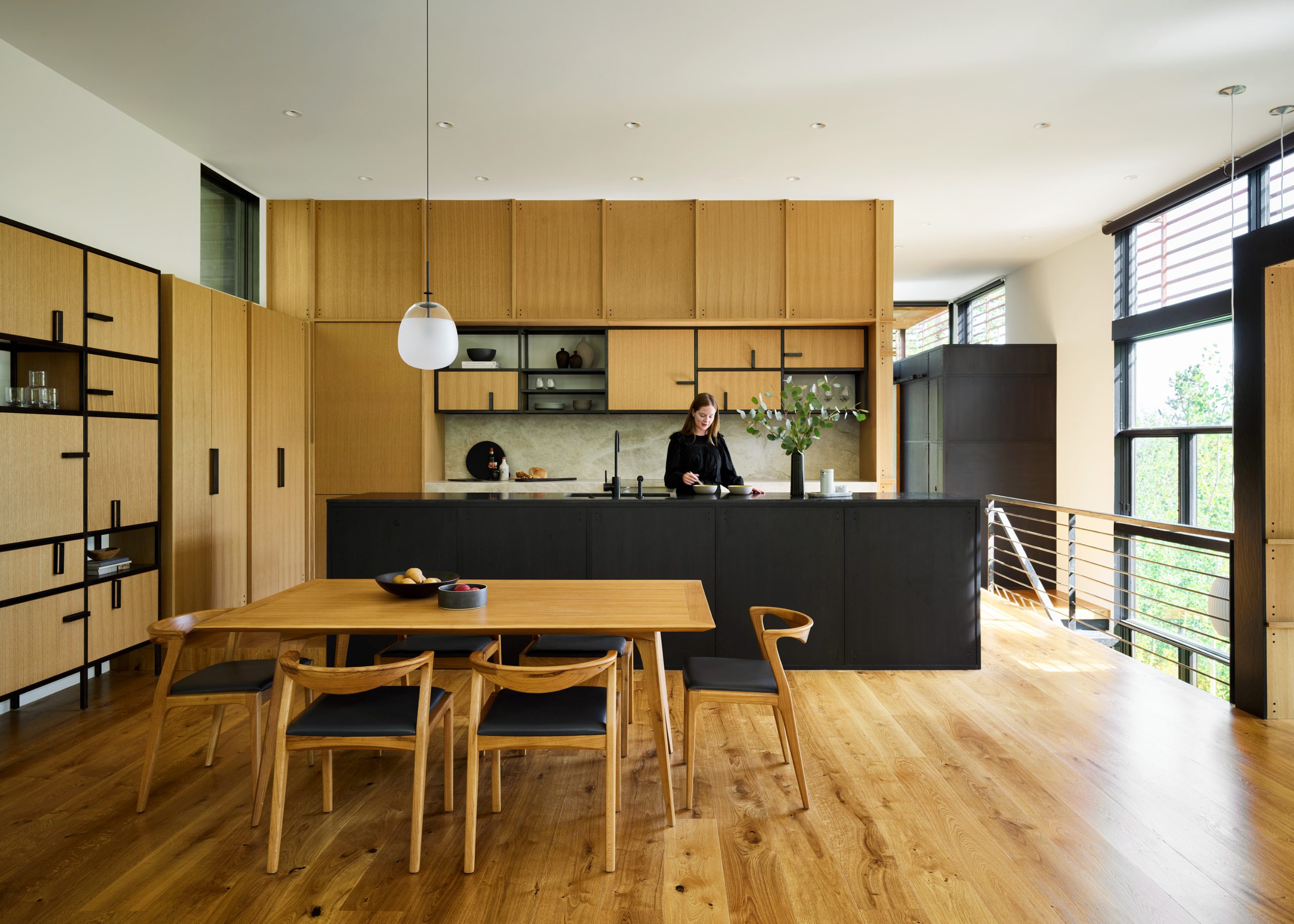
The team worked closely with the client to select an elevated palette of materials, prioritizing durability and a play of textures. In the kitchen, white oak cabinetry modules are framed by powder-coated steel to mimic the home’s structurally expressive exterior, and a reinvented island allows for easy entertaining.
“What we ended up doing was creating something that had a little bit more of a crafted feel with the lighting and extrusions and inlaid approach to cabinetry, it’s really beautiful,” notes Sarah Kennedy, interior designer with CLB.
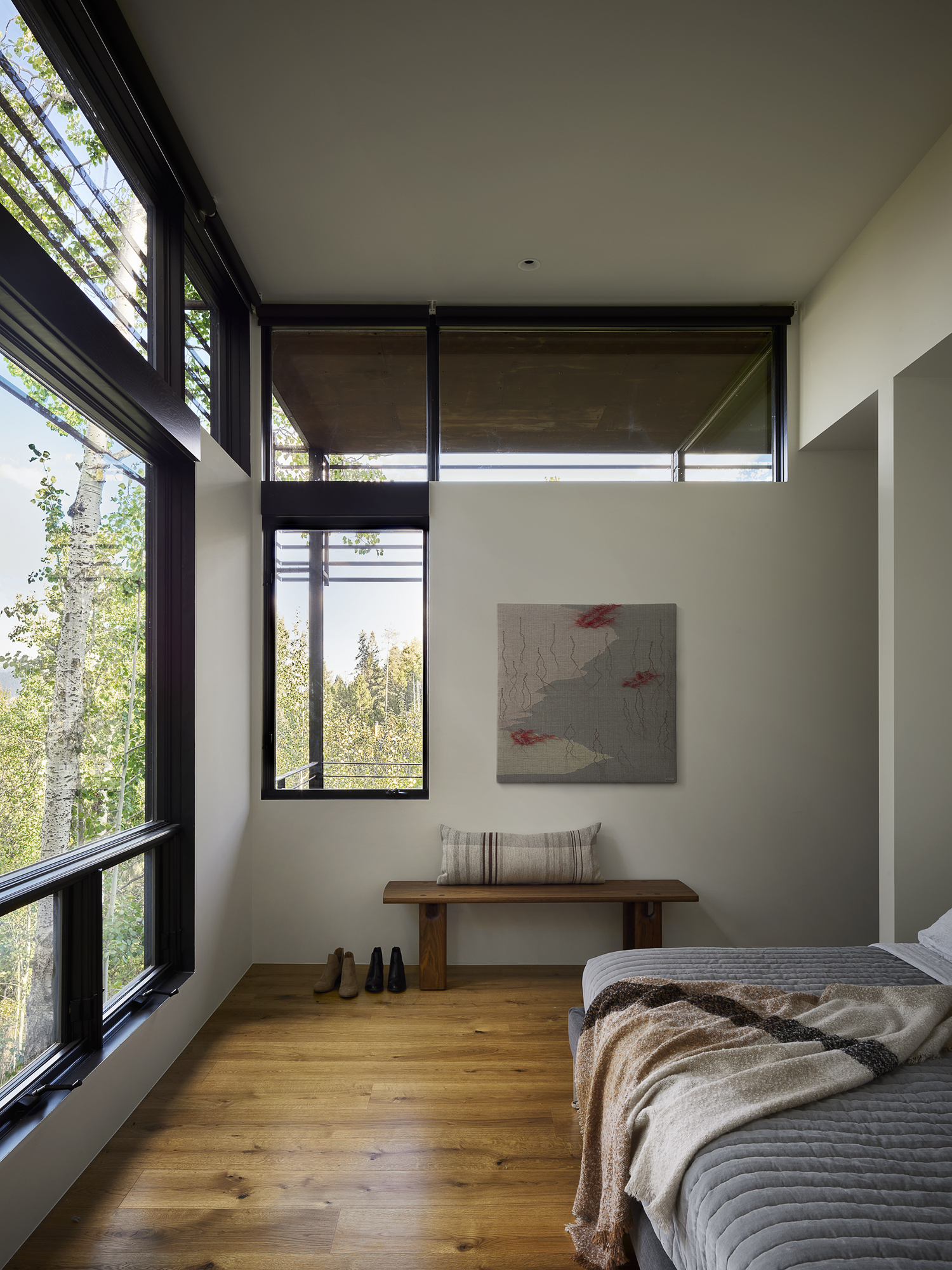
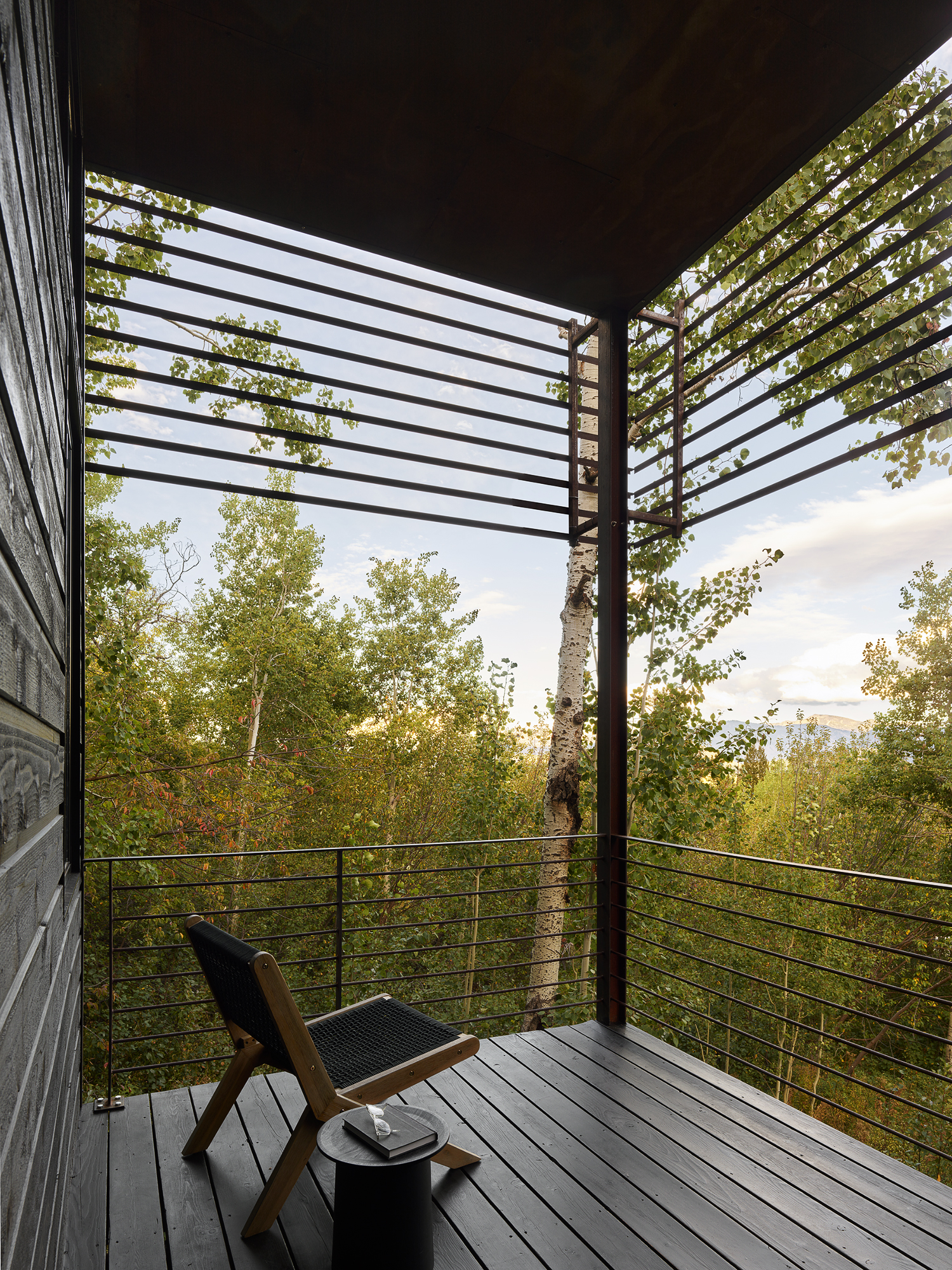
Photography by Matthew Millman

